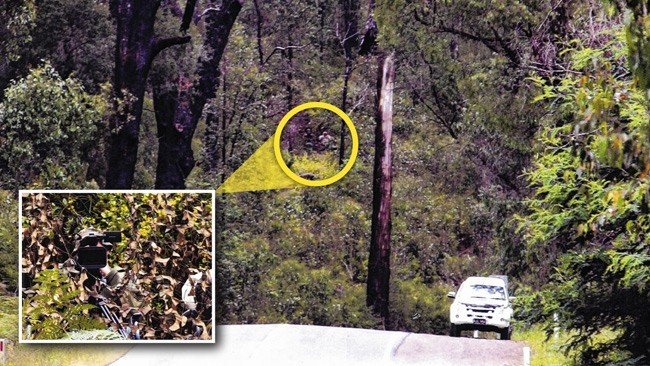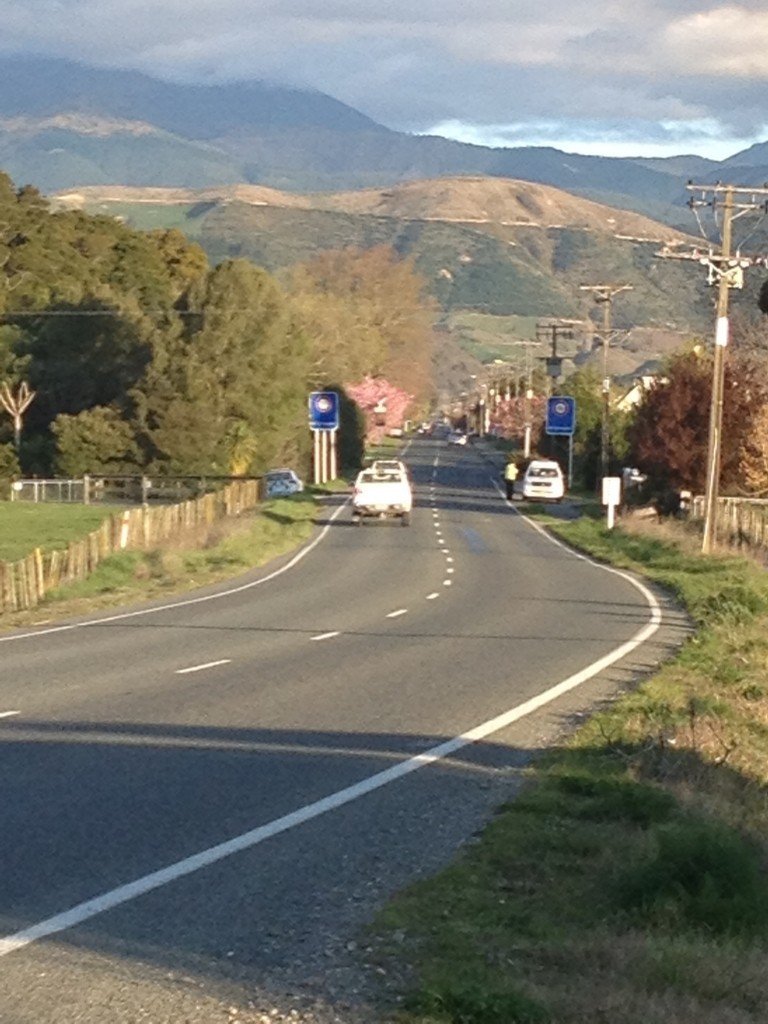
The concern and reason for writing this article is that I find the current climate of what can only be interpreted as revenue collection, abhorrent.
The police argue that they clamp down on speed for safety reasons and in some circumstances this is entirely warranted. BUT, evidence suggests that the police’ attitude is more about being out to get you.
Let’s face it, if this was all about safety and then why not hand out fines of $1,000 for every KPH over - people wouldn’t speed then. They’d be recklessly concentrating on their speedo.
The police will argue they only place covert cameras in high crash rate sites. If you want people to slow down through these high-risk areas, you clearly won’t accomplish it by hiding a camera and informing drivers a few weeks later of their transgression.
During a journey it is virtually IMPOSSIBLE to not exceed the limits occasionally.
Whilst driving, the motorist should concentrate on the road and hazards and regularly glance down to check the speed. The problem is that whilst processing the thousands of distractions on the road, speed naturally fluctuates and the police appear to be hell-bent on catching and prosecuting responsible motorists for those few seconds of excess speed. In my opinion this is not speeding and not deserved of large fines that often have further consequences.
I have followed many traffic cops and they always creep above and drop below the limit. They spot a motorst doing the same and serve them with a ticket.
I am prompted to write this article after two highly dubious stops. As you’ll read, the police in question did not follow the operations manual in any way shape or form, therefore the readings obtained were unreliable and were unenforceable.
In this article I will be detailing excerpts from the police operations manual and outlining the a clear and valid defence should you choose to take the case to court.
DOWNLOAD POLICE SPEED TRAP OPERATIONS MANUAL HERE. (It’s a new Zealand copy but is effective for all forces using the Stalker unit across the world)
THE RADAR TRAP
The Stalker device is very sophisticated and capable of taking a forward and reverse facing reading. It is also capable of taking a reading for either the fastest or largest target in the field of view.
Having said that it is also a dumb device and CANNOT determine WHICH target is producing the reading.
This failing is well understood therefore a Code of Operation is published and must be followed. It outlines the correct procedure to obtain a reliable reading.
In summary, the officer must have a clear view of the traffic they are monitoring. They are trained to ESTIMATE speed. If they spot a vehicle they feel is speeding they are to estimate that speed manually, they are to establish a FULL tracking history including the car make and colour. The radar is ONLY to be used to CONFIRM the officers’ estimation.
In the case of the first trap I was subject to, the officer was sat in his patrol car at night, with his back to oncoming traffic in a four lane highway. He was obscured by a bridge and hidden deep in bushes. The view of traffic from his vehicle would have consisted of a set of headlights reflected in the rear view mirror!
Radar works by bouncing a signal off an object. The point here is that it bounces it off the FIRST object in its line of sight. An officer operating a trap MUST have a clear line of sight. The officer took a spurious reading and then enforced it. I took the officer to court with a clear defence that in the position he set up the trap, he was unable to take a reliable reading.
Unfortunately, on that occasion the officer chose to commit perjury and moved the position of the trap. Luckily, as I recommend, I recorded the conversation and the case is now with the Police Complaints Commission.
The second spurious ticket I received was taken by another officer hiding in bushes and obscured by multiple objects. (See police car sat in bushes to the left with line of sight obstructed by poles, trees, signs etc. etc)
Hidden speed trap

This experience prompted me to delve deeper into the Code of Operations and it’s now clear that the officer simply did not follow a single code of conduct.
DEPOLYMENT
An ideal site is a straight for at least 250m with the road surface slightly rising away from the radar unit and free from undulations.
Tracking History
A tracking history of the vehicle must be established. Tracking history for all speed dictation units contain three main elements:
- visual observation
- audio observation
- verification by speed sector
To eliminate errors effectively, all three elements must be present for each speed check.
For radar units operating in mobile mode the vehicle ground speed must be confirmed by a certified speedometer
Multiple Vehicles in Beam
Where there is more than one vehicle in the beam, enforcement action may be taken, providing the operator can give sufficient evidence relating to the tracking history of other vehicles and the offender’s speed
THE STOP
It is highly unlikely, unless you’re wearing a short skirt :) that you’ll talk your way out of the speeding allegation on the side of the road so it’s wise to say nothing. I would recommend that you do not question the trap or make a case for the exceed speed limit. This will only serve to ensure the officer makes more notes and remembers you.
If you feel the reading was unreliable and the officer did not adhere to the operations manual procedures then take covert pictures to be used later.
YOUR DEFENCE
There is generally no defence for speeding, it’s black and white. However, if that reading can be proven to be INACCURATE, then it cannot be enforced. There are strict operational procedures to be followed to ensure a reading is taken accurately. If the operations are not followed then the reading obtained is unreliable.
IN COURT
The procedure in court is that you have the opportunity to first question the officer and then sum up.
It is important in the questioning stage that you establish, outline and identify the correct procedural operations the officer must follow in their enforcement of your fine and it is better if you have the officer do that.
QUESTIONS
The following line of questioning will set up the platform to effectively sum up your defence. Some are relevant to police attempting to take readings in a covert position.
Q. Are you familiar with the operational procedure of the unit used to obtain the reading?
A. Should be yes
Q. Is site selection important when setting up the trap?
A. Yes
Q. What does the operational manual say about setting up a safe speed trap?
A. Site selection is extremely important when operating radar in a stationary mode. An operator must consider both operation and safety considerations when selecting a location.
IDEAL SITE: An ideal site is a straight for at least 250m with the road surface slightly rising away from the radar unit and free from undulations.
SITE SAFETY: When setting up a stationary site the operator should do so without interfering with traffic movement. The site should allow the operator room to stop the offender using hand signals without the need for pursuit. Safe and legal parking should be available for the vehicles stopped.
Q. How does RADAR work?
A. should be along the lines of: Radio waves are emitted into free space. If the energy strikes an object part of that scattered energy is returned to the receiving antenna. The beam is fired out in the shape of a cone, like torch beam with a 12 degree spread.

Q. Can RADAR obtain a reading through an inmate object?
A. No - it is reflected for the FIRST object encountered.
Q. I understand that the police unit has a setting for largest or fastest object. Can it determine which object is returning the reading?
A. No
Q. Therefore, is it a requirement that the operator must establish a tracking history?
A. Yes
Q. What does the operational manual say about establishing a tracking history?
A. Obtaining a proper tracking history of the target will eliminate errors. Tracking history is the chain of evidence that provides the operator with the assurance the target vehicle speed is correctly captured by the radar equipment.
The operator must demonstrate that they are able to establish a tracking history of the vehicle. this means they:
See the target vehicle and specify what it looks like e.g. a red Toyota or blue Mazda
Tracking history for all radar contains three elements:
- Visual observation
- Audio observation
- Radar verification
Visual observation:
There are three elements to visual observation
- identify the target vehicle and continue to monitor its travel
- confirm the target vehicle is within the radar’s range
- estimate the target vehicle’s speed
Audio confirmation. The operator must:
- listen for a clear Doppler tone
- check the tone is consistent with the speed
- check the level of the audio tone is strong and not fluctuating or warbling
Radar verification
There are four parts to the verification
- the initial reading is consistent with the operator’s visual observation and operator-estimated speed
- a steady target reading
- readings consistent with visual observation and audio tone
- ground speed readings confirmed by patrol speedometer
When the operator is satisfied the target vehicle is producing the correct reading they should lock the reading and take the appropriate enforcement action. Failure to lock the speed will not prevent enforcement action.
Q. When issuing a notice what does the manual say about recording the offence and tracking history?
A. Record a summary of the offence on the reverse of the notice including tracking history.
Q. Do you have a documentary evidence that you established a tracking history?
A. Generally, this will be a no.
Q. Do you have a documentary evidence that you established you followed the Code of Operations?
A. Generally, this will be a no.
Q. What doe the Code of Operations say regarding any doubt whatsoever with operational procedure for obtaining an accurate reading?
A. Fairness. Operators must use their training and experience to ensure that there are no significant sources of reflection or interference in the vicinity of the offence.
IF THERE IS EVER ANY DOUBT CONCERNING THE SPEED CHECK OR THE OPERATION OF THE SPEED DETECTION UNIT, NO ACTION IS TO BE TAKEN.
SUMMING UP.
During questioning we clearly established that the speed trap was not properly set up/operated/tracking history was not adequately established to documented therefore the reading was unreliable.
According to the operational code this unreliable reading cannot be enforced














